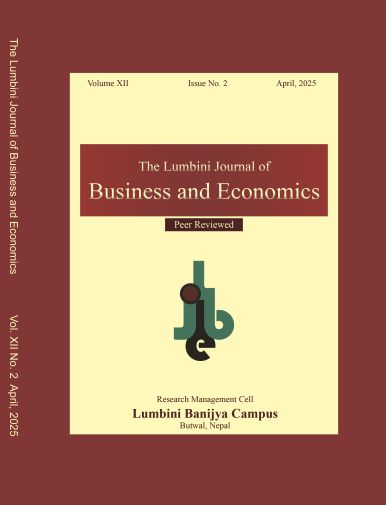Effect of Policy Variables on the Process of Money Supply
DOI:
https://doi.org/10.3126/ljbe.v12i2.77421Keywords:
Money supply, open market operation, treasury bills rate, time series, ARDLAbstract
Purpose: This paper investigates the effect of monetary policy variables to money supply in Nepal, with the help of monetary policy instruments.
Methods: This study used casual research design. The research used auto regressive distributed lag model for data analysis, the study examined the impact of variables like Reserve Money on Nepal’s monetary dynamics. Key policy tools, such as the Cash Reserve Ratio (CRR), Bank Rate, and Treasury Bills Rate, are also assessed for their roles in shaping money supply.
Results: The findings reveal that reserve money has strong positive effect on the money supply, similarly, Bank rate and treasury bills rate also has significant positive relationship with the money supply, whereas Cash reserve ratio negatively affects the money supply.
Conclusion: This work fills a critical gap in understanding Nepal’s monetary landscape, providing essential insights for policymakers at the Nepal Rastra Bank. By identifying key instruments of money supply, the study offers actionable recommendations for crafting effective monetary policies that stabilize the economy, control inflation, and foster growth. Ultimately, this thesis enhances comprehension of monetary dynamics in Nepal, emphasizing the need for context-specific policy approaches.




